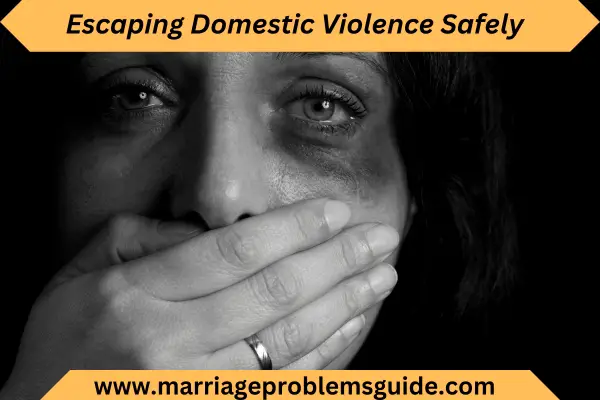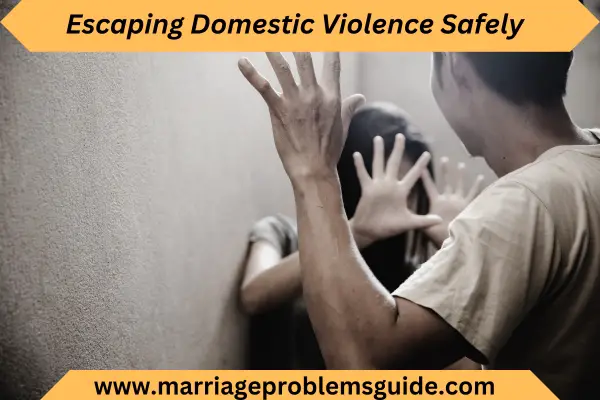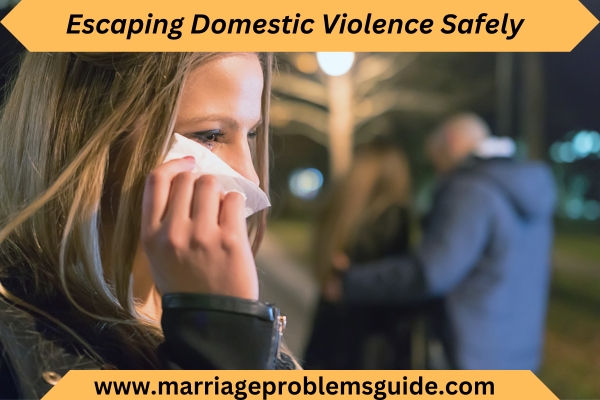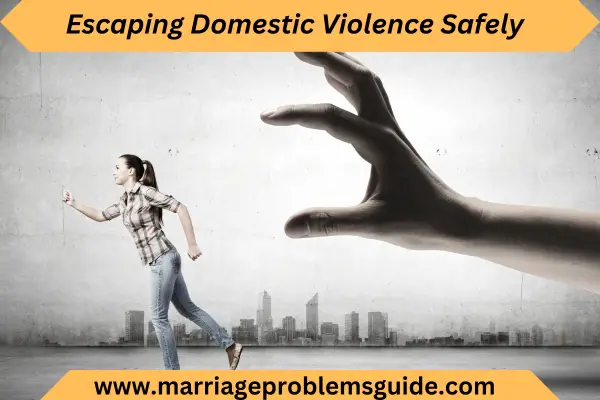Escaping Domestic Violence Safely
Domestic violence affects millions of women, men, and children each year. According to the National Coalition Against Domestic Violence (NCADV), nearly 20 people per minute are physically abused by an intimate partner in the United States alone.
Escaping an abusive relationship can be extremely challenging, but with the right plan and support, it is possible.
In this blog article, we will provide important information and actionable steps victims of domestic violence can take to leave their abuser and build a new life safely.
Understanding Domestic Violence
Domestic violence, or intimate partner violence, describes a pattern of abusive and coercive behaviors one partner uses to maintain power and control over the other in an intimate relationship. While both men and women can be victims, most are women abused by men.
Domestic violence can take many forms, including:
- Physical abuse – Hitting, slapping, shoving, grabbing, pinching, biting, hair pulling, burning, strangling and other types of contact frequently resulting in injuries.
- Sexual abuse – Coercing or attempting to coerce any sexual contact without consent, attacking sexual parts of the body, forced prostitution or participating in unwanted sexual activity.
- Emotional abuse – Undermining a partner’s self-worth through constant criticism, verbal threats, social isolation, intimidation and other controlling behaviors.
- Economic abuse – Exerting financial control by preventing a partner from working, limiting access to money, forcing them to take on debt and surrendering paychecks.
- Digital abuse – Using technology and social media to stalk, harass, threaten, intimidate, bully and humiliate a partner.
Though both men and women experience domestic violence, women are more likely to face injuries or even death. According to the Centers for Disease Control and Prevention (CDC), nearly half of female homicide victims are killed by a current or former male partner.
It’s critical to know that no one deserves to be abused. Domestic violence is never the victim’s fault – it is always the choice of the abuser. Help is available.

Making an Escape Plan
Leaving an abusive relationship takes strength and courage. Because abusers aim to gain power and control, they may go to extreme lengths to prevent victims from leaving through manipulation, threats or violence.
Having an escape plan can help victims safely exit an abusive relationship and reduce risks.
Here are some essential steps to create an exit strategy:
- Identify support systems – Reach out discreetly to supportive friends, family or a local domestic violence program for help planning your escape.
- Obtain important documents – Quietly gather identification, financial, legal and medical records for you and your children. Store copies offline and online.
- Open your own bank account – Secure financial independence by opening a new account if possible and slowly building funds.
- Pack an emergency bag – Pack essentials like clothes, medications, cash, keys and important documents in a hidden bag.
- Know where to go – Identify a safe place to stay like a shelter, hotel or supportive friend or family member’s home.
- Create backups – Memorize emergency phone numbers, establish a code word with loved ones and have backups for transportation, money, food, housing and childcare.
- Remove tracking apps and devices – Delete tracking apps, change online passwords and disable GPS tracking to prevent the abuser from monitoring your activities.
- Review your safety options – Consider getting a protection order and explore steps to boost personal and home security.
Leaving immediately without a plan can be very dangerous. Victims are at the greatest risk when attempting to exit as the abuser escalates abusive behaviors to regain control. Having an escape plan and support system in place will help victims safely exit.

Finding Help and Support
Victims of domestic violence do not have to cope alone. There are many local and national resources available to help individuals escape abuse and build a new life.
- National Domestic Violence Hotline – Confidential support available 24/7: 1-800-799-7233
- DomesticShelters.org – Searchable database for shelters, programs and services near you.
- WomensLaw.org – Provides legal information, resources and support tailored to abuse victims.
- National Coalition Against Domestic Violence – Advocacy group focused on policy reform and public awareness.
- RAINN.org – National resource offering support for sexual violence survivors.
- TheHotline.org – Domestic violence support with specialized resources for LGBTQ, male and teen victims.
Local domestic violence shelters and programs also offer 24-hour crisis hotlines, emergency housing, counseling, support groups, safety planning, legal advocacy and referrals to community resources.
Seeking counseling with a domestic violence advocate can further help victims process trauma, navigate safety options, and rebuild self-esteem. Support is essential – no one should escape abuse alone.
Securing Financial Stability
Abusers often employ tactics like financial abuse to gain control and prevent victims from establishing independence. Without financial resources, many feel trapped in abusive relationships.
There are steps victims can take to secure financial stability after leaving an abusive partner:
- Open your own bank account and credit cards if possible. Slowly build up funds and credit history.
- Talk to your bank about enhancing account security, transferring funds safely and opening new accounts.
- Build up an emergency fund with cash, prepaid credit cards, and money orders if possible.
- Contact utility providers to remove the abuser from accounts and transfer service into your name.
- Speak with an attorney about child support, alimony and marital division of assets if married.
- Apply for government benefits like TANF, SNAP, WIC, and Medicaid if eligible.
- Update important documents like tax returns, insurance policies, and estate plans.
- Consider grants, subsidies, and voucher programs from local domestic violence agencies.
- Enroll in job training, career coaching, and financial literacy programs to boost employability.
With the right support, domestic violence victims can gain financial independence and stability over time. Prioritize safety first and know there are resources to help.

Achieving Long-Term Safety
While escape plans focus on immediate safety needs, establishing long-term security requires ongoing planning and diligence. Abusers may continue threats and harassment even after separation.
Here are some essential tips for maintaining safety after leaving:
- Get a protection or restraining order and report any order violations.
- Vary daily routines like commuting routes and times to avoid stalking.
- Screen calls and save evidence like abusive voicemails or texts.
- Alert family, friends, neighbors, and employers about the situation.
- Review home and digital security by installing cameras, changing locks and enhancing cyber protections.
- Consider concealed carry permits or other self-defense strategies.
- Join a support group to build community and exchange safety tips.
- Work with an advocate to identify risks, safety plan and process trauma through counseling.
Achieving safety and freedom is a journey – there is light at the end of the tunnel. Life after domestic violence is possible with courage, support, and planning. Learn here more about domestic violence guidance and tips.


